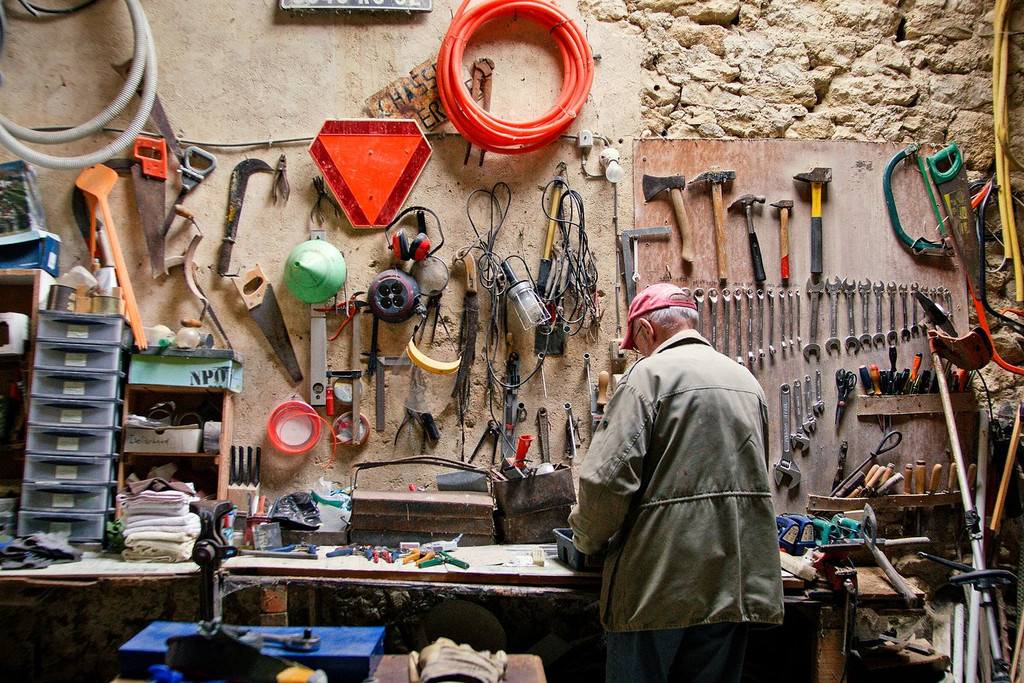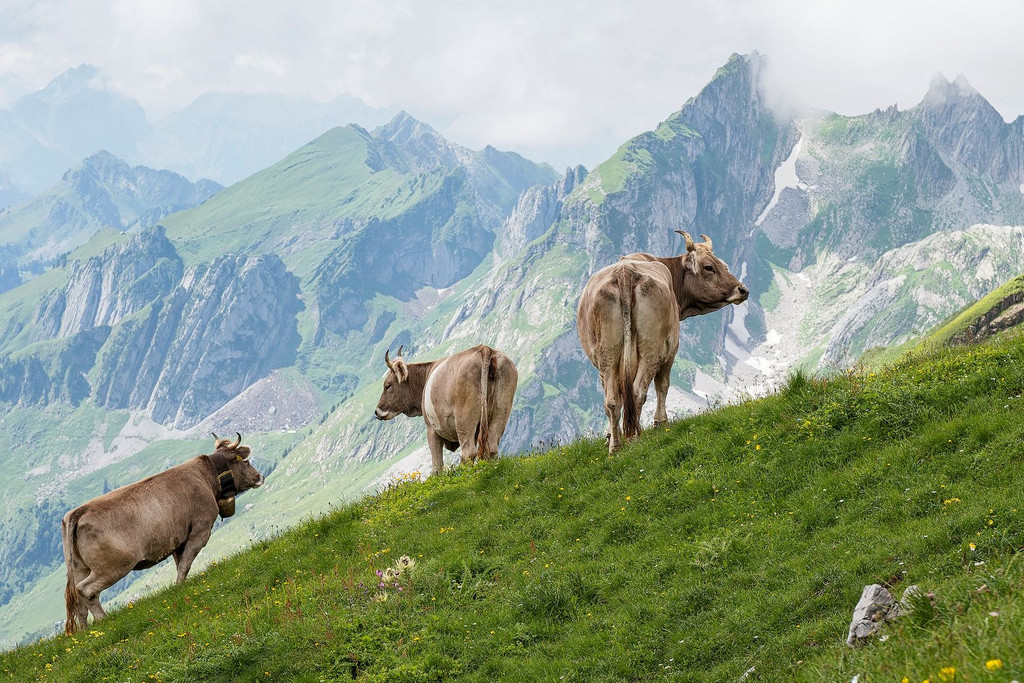Hilly forests, terraced pastures, picturesque villages and buildings from another age. Hikers ramble into a different era through the mountains and hillsides of the Muggio Valley. Nestled between Monte Generoso on the shores of Lake Lugano and Monte Bisbino, and towering over Lake Como, this region is a natural paradise opening up to the southern lowlands. Last May, it was crowned “landscape of the year 2014” by the Swiss Foundation for Landscape Conservation (Fondation suisse pour la protection et l’aménagement du paysage). This prize is recognition above all of the surveying and restoration of cultural assets that have been carried out for over thirty years by the valley’s museum of ethnography. Its curator, Paolo Crivelli, aged 63, has been involved in the initiative from the outset. “The museum is the valley,” he declares. “You have to do some walking of course!” That is an understatement - it climbs from 300 to 1700 metres above sea level. At its foot, the urban area of Mendrisio appears to belong to a different world, such is the contrast with the small villages typical of the valley. A host of buildings designed for working in the alpine pastures and the subsistence farming by the inhabitants of long ago have also been saved from oblivion. It is time to set out on the route past stone houses, red-tiled roofs and welcoming grottos.
A river runs through it
On the outskirts of Chiasso, hikers arrive at the Grotto del Mulino in the Breggia Gorges Park, which is situated at the bottom of the valley, where they can taste local cuisine (nostrano) and enjoy a delicious white wine from Mendrisiotto, a region in southern Ticino that produces most of of the wine in the canton. This is Switzerland’s largest geopark. These steep gorges are sculpted by the river Breggia which rises in Monte Generoso and runs through the centre of the entire valley before entering Lake Como. Here the rock stratifications and ammonite fossils are around 400 million years old. It is very humbling. Upstream the bridge of Castel San Pietro provides a breathtaking view of this geotope of national interest. During the ascent, the forests and villages keep rolling by. Hidden in the deciduous trees in a haven of tranquillity cradled by the Breggia, the watermill at Bruzela is one of the valley’s highlights. “In 1983, the museum acquired this 13th century building and we spent over ten years restoring it,” explains Paolo Crivelli. “The former miller was still alive and a young woman on the museum committee learned the trade. Since 1996 Irene Petraglio has been the manager of the mill, which has been returned to working order. We started to use a traditional corn seed again known as the ‘rosso del Ticino’ which is in great demand in the region today for making polenta.”
The museum is the valley
Having arrived at Cabbio (667 m), it is hard not to be captivated by the village’s charm. Amidst the stone houses, Theseus-like tourists quickly get lost in the labyrinth of its narrow cobblestoned streets. It is here, close to the church, that the Muggio Valley’s museum of ethnography set up its information centre at the beginning of the 2000s in a former artists’ house, known as the Casa Cantoni. “The idea of setting up a museum of ethnography to promote the region’s culture was conceived in 1980 following the canton’s acknowledgement of the valley as a mountain region,” recounts Paolo Crivelli. “It is a kind of open-air eco-museum aimed at highlighting the cultural heritage found in the landscape.” All of the traditional assets of the valley and Monte Generoso have therefore been explored, studied, inventoried and, in some cases, restored. One example is the “neveres”, stone silos buried in the ground which were filled up with snow in winter to preserve the milk in the alpine pastures during the warmer seasons. The “roccoli”, stone towers for catching birds, and the “graa”, buildings used for drying and smoking chestnuts, are others. This is going back to a time when the people of the region lived on the alpine pastures in the summer and in the villages during the winter.
Scudellate and a panoramaof the Pô valley
The climb continues. After Muggio, a long and winding road leads to Scudellate, the valley’s highest village, perched on the sides of Monte Generoso at over 900 metres above sea level. The view from here is magnificent. Visitors can see as far as the Pô valley and even Milan. In good weather conditions, the Apennines mountain range can be seen along with Monte Viso and Turin. This landscape was enjoyed by the early British tourists who started visiting in the 1850s.
The abandoned customs house in Scudellate is a curiosity that invites hikers to explore episodes of smuggling. “From an historical perspective, the border existed but at the same time didn’t,” remarks Paolo Crivelli. “People and animals moved across it without paying it much attention. It was only during the First World War, and then the Second World War in particular, that it became really impassable.” Smuggling went on until the 1970s. Coffee and cigarettes were transported from the Muggio Valley into Italy and rice, for example, was brought into Switzerland. There is now only one bridge to cross to reach Italy and the village of Erbonne. On the pastures around “Squadrina” and “Pesciò”, around 20 Haflinger-breed horses live in complete freedom during the warmer seasons after their transhumance from Monte Bisbino to Monte Generoso. There is something magical about this place. Just like the charm of the grottos, which are a good place to quench your thirst at the end of the hike. In Mendrisiotto they say this Swiss-Italian fusion impregnates the entire region and the character of the people.
www.mendrisiottoturismo.ch
Alain Wey is a freelance journalist
Landscapes: a cultural identify and a foundation
Preserving, maintaining and showcasing landscapes worthy of protection in our nation is the objective of the Swiss Foundation for Landscape Conservation (Fondation suisse pour la protection et l’aménagement du paysage) which was founded in 1970 by Pro Natura, Patrimoine suisse, the Swiss Association for National Development, the Swiss Alpine Club and the Swiss Tourism Federation. It seeks to preserve our cultural identity and history in harmony with nature, humankind and sustainable development. Its initiatives include the restoration of traditional irrigation canals, the conservation of terraced landscapes, the revitalisation of chestnut groves and the renewal of pathway landscapes. The Swiss Foundation for Landscape Conservation has awarded a “landscape of the year” prize since 2011 to raise the profile of Swiss landscapes that are little known, worth exploring or under threat. This award was presented to the Val Sinestra in lower Engadine (canton Grisons) in 2011, to the Birspark landscape (region along the Birse, cantons Basel-Landschaft and Solothurn) in 2012, to the Geneva countryside in 2013 and, finally, to the Muggio Valley in 2014. www.sl-fp.ch














Comments
Comments :
The Website would just have a print option added, which could insert a copyright sign if desired!